The Vivo X60 Pro 5G (Snapdragon) is the global release of this device and differs from the China-only Exynos version not only in the chipset but also in the photography specifications, with only a single tele-lens included on the Snapdragon model versus two teles on the model for the Chinese market.
The handset features the Snapdragon 870 chipset with 12 GB RAM and 256 GB storage, runs Android 11, and boasts a 4200 mAh battery with 33W flash charging. The display is a large 6.56-inch FHD+ AMOLED with a 120 Hz refresh rate.
Aside from dropping the second tele-lens, the camera is the same as in the Exynos version. Co-engineered with Zeiss, the primary camera is built around a 48 MP Quad Bayer sensor (12 MP output) with a f/1.48-aperture lens. Both zoom cameras utilize 13 MP sensors, with a f/2.46-aperture lens on the tele and a f/2.2-aperture lens on the ultra-wide.
Let’s see how the device performed in our DXOMARK Camera tests.
Key camera specifications:
- Primary: 48 MP 1/2.0-inch sensor with 0.8µm pixels, 26 mm-equivalent f/1.5-aperture lens, PDAF, OIS
- Ultra-wide: 13 MP sensor, 120° field of view, 16 mm-equivalent f/2.2-aperture lens
- Tele: 13 MP 1/2.8-inch sensor with 0.8µm pixels, 50 mm-equivalent f/2.5 lens (2x optical), PDAF
- Video: 2160p at 30 fps, 1080p at 30/60 fps (1080p at 30 fps tested)
About DXOMARK Camera tests: For scoring and analysis in our smartphone camera reviews, DXOMARK engineers capture and evaluate over 3000 test images and more than 2.5 hours of video both in controlled lab environments and in natural indoor and outdoor scenes, using the camera’s default settings. This article is designed to highlight the most important results of our testing. For more information about the DXOMARK Camera test protocol, click here. More details on how we score smartphone cameras are available here.
Test summary
Scoring
Sub-scores and attributes included in the calculations of the global score.
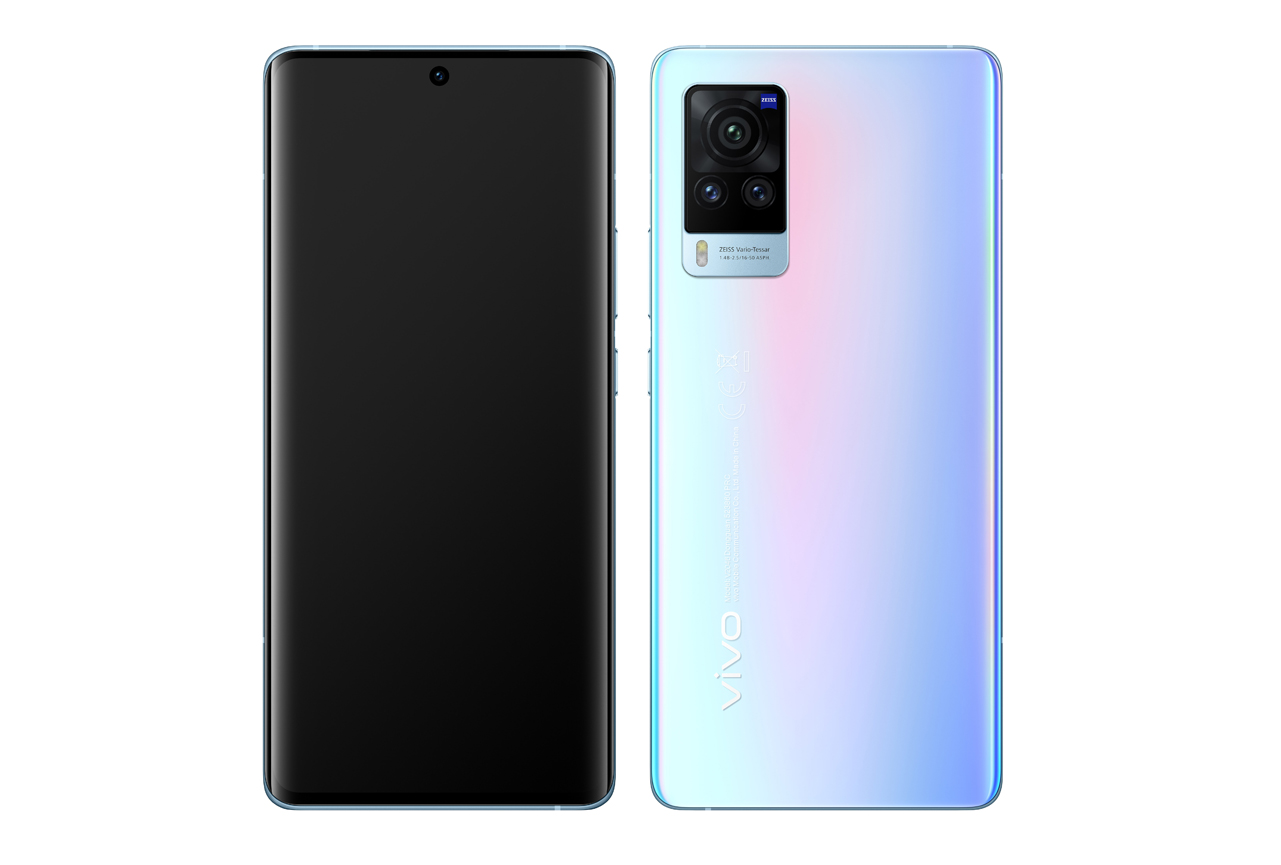
Vivo X60 Pro 5G (Snapdragon)


Use cases & Conditions
Use case scores indicate the product performance in specific situations. They are not included in the overall score calculations.
Outdoor
Photos & videos shot in bright light conditions (≥1000 lux)
Indoor
Photos & videos shot in good lighting conditions (≥100lux)
Lowlight
Photos & videos shot in low lighting conditions (<100 lux)
Friends & Family
Portrait and group photo & videos
 120th
120th 25th
25thPros
- Wide dynamic range in all photos
- Good detail in all photos
- Generally accurate photo and video autofocus
- High detail in outdoor ultra-wide photos
- Accurate target exposure in outdoor and indoor videos
- Pleasant color in most videos
- Well-controlled noise in most videos
Cons
- Exposure instabilities, especially in outdoor photos
- Inaccurate exposure and color rendering on deep skin tones in photos
- Visible noise in low-light photos
- Low detail in most tele photos and all videos
- Limited dynamic range in videos
- White balance instabilities in low-light videos
- Hue shift artifacts visible in many videos
With an overall score of 120, the Vivo X60 Pro 5G (Snapdragon) secures a position in the upper ranks of the Premium segment (devices priced between $600 – $799). You you can expect similar global image quality as the Google Pixel 5 and Xiaomi Mi 11 (both at 120), and the Vivo is only a couple of points shy of the top-ranked Premium Apple iPhone 12 and iPhone 12 Mini smartphones at 122.
The Vivo X60 Pro 5G (Snapdragon) also manages to improve on the score we recorded for the Exynos version by two points, thanks to slightly enhanced autofocus performance. Otherwise image quality is very similar between the two, and perhaps somewhat surprisingly, the Vivo X60 Pro 5G (Snapdragon) is just as good for long-range zoom shots despite not having a 5x tele-lens.
The Vivo X60 Pro 5G (Snapdragon) also beats the score of the Oppo Find X3 Neo by 5 points primarily due to better overall exposure, with wide dynamic range and vivid color rendering. The Vivo X60 Pro 5G (Snapdragon) is close overall to the performance of Xiaomi’s Mi 11; however, the Xiaomi device offers an improved texture-to-noise tradeoff, rendering more detailed images with less noise compared to the Vivo.
Below you can find a detailed analysis and image samples for all Photo, Zoom, and Video sub-attributes, as well as comparisons with two of the Vivo X60 Pro 5G (Snapdragon)’s competitors, the Samsung Galaxy S21+ 5G (Exynos) and the Xiaomi Mi 11.
Photo
The Vivo X60 Pro 5G (Snapdragon) achieves a Photo score of 127. In this section, we take a closer look at each sub-attribute and compare image quality against competitors.

Exposure and Contrast
Vivo X60 Pro 5G (Snapdragon)
101
111
In these tests we analyze target exposure, contrast, and dynamic range, including repeatability across a series of images. Tests are undertaken in a wide range of light conditions, including backlit scenes and low light down to 1 lux. The score is derived from a number of objective measurements in the lab and perceptual analysis of real-life images.
These samples show the Vivo X60 Pro 5G (Snapdragon)’s exposure performance in a high-contrast scene.

Color
Vivo X60 Pro 5G (Snapdragon)
100
107
In these tests we analyze color rendering, skin tones, white balance, and color shading, including repeatability across a series of images. The score is derived from a number of objective measurements in the lab and perceptual analysis of real-life images.
These samples show the Vivo X60 Pro 5G (Snapdragon)’s color performance in an outdoor setting.

Autofocus
Vivo X60 Pro 5G (Snapdragon)
97
109
In these tests we analyze autofocus accuracy and shooting time, including repeatability, in the lab. We test focus failures, depth of field, and tracking of moving subjects using perceptual analysis of real-life images.
This graph shows the Vivo X60 Pro 5G (Snapdragon)’s autofocus performance in the lab, handheld at a light level of 20 lux and a brightness range of 7 EV.

Texture
Vivo X60 Pro 5G (Snapdragon)
95
111
In these tests we analyze texture on faces and objects, including objects in motion, in a range of light conditions, using several lab test setups and perceptual analysis of real-life images.
These samples show the Vivo X60 Pro 5G (Snapdragon)’s texture performance in the lab.

Noise
Vivo X60 Pro 5G (Snapdragon)
70
102
In these tests we analyze noise on faces and objects, including objects in motion, in a range of light conditions, using several lab test setups and perceptual analysis of real-life images.
These samples show the Vivo X60 Pro 5G (Snapdragon)’s noise performance in low light.
For these tests we switch to the camera’s bokeh or portrait mode and analyze depth estimation, bokeh shape, blur gradient, and repeatability, as well as all other general image quality attributes mentioned above. The score is derived from perceptual analysis of real-life images.
These samples show the Vivo X60 Pro 5G (Snapdragon)’s bokeh simulation tested in the lab.

Night
Vivo X60 Pro 5G (Snapdragon)
56
82
In these tests we shoot a selection of images in pitch-black darkness as well as with city lights in the background providing some illumination. We shoot sample images with the camera at default settings in both flash-auto and flash-off modes. We analyze all image quality attributes but we pay particular attention to exposure, autofocus, and color. We do not test night modes that have to be activated manually.
These samples show the Vivo X60 Pro 5G (Snapdragon)’s night performance in flash-off mode.

Artifacts
Vivo X60 Pro 5G (Snapdragon)
63
77
In these tests we check images for optical artifacts such as vignetting, flare, lens softness in the corners, distortion, and chromatic aberrations, as well as for processing artifacts such as ghosting and fusion errors, hue shift, and ringing.
This sample shows color fringing artifacts in a high-contrast image.

Preview
Vivo X60 Pro 5G (Snapdragon)
47
80
In these tests we analyze the image quality of the preview image and the differences between preview images and captured images, particularly in terms of exposure, dynamic range, and bokeh effect. We also check the smoothness of the field-of-view changes in the preview image when zooming with both buttons or when using the pinch-zoom gesture.
These samples show the differences in the Vivo X60 Pro 5G (Snapdragon)’s bokeh rendering between the preview and the final image when in portrait mode.
Zoom
The Vivo X60 Pro 5G (Snapdragon) achieves a Zoom score of 72. The Zoom score includes the tele and wide sub-scores. In this section, we take a closer look at how these sub-scores were achieved and compare zoom image quality against the competitors.

Wide
Vivo X60 Pro 5G (Snapdragon)
42
58
In these tests we analyze the performance of the ultra-wide camera at several focal lengths from 12 to 20 mm. We look at all image quality attributes, but we pay particular attention to such artifacts as chromatic aberrations, lens softness, and distortion.
These samples show the performance of the Vivo X60 Pro 5G (Snapdragon)’s ultra-wide camera under low-light conditions.

Tele
Vivo X60 Pro 5G (Snapdragon)
92
140
In these tests we analyze all image quality attributes at focal lengths from approximately 40 to 300 mm, paying particular attention to texture and detail. The score is derived from a number of objective measurements in the lab and perceptual analysis of real-life images.
These samples show the Vivo X60 Pro 5G (Snapdragon)’s tele performance in the lab at 100 lux using a close-range zoom setting.
Video
In our Video tests we analyze the same image quality attributes as for still images, such as exposure, color, texture, and noise, but we also include such temporal aspects as speed, smoothness and stability of exposure, white balance, and autofocus transitions.
NOTE: The sample video clips in this section are best viewed at the highest resolution available.
The Vivo X60 Pro 5G (Snapdragon) achieves a Video score of 100. A device’s overall Video score is derived from its performance and results across a range of attributes in the same way as the Photo score. In this section, we take a closer look at these sub-scores and compare video image quality against competitors.

Exposure and Contrast
Vivo X60 Pro 5G (Snapdragon)
97
118
These sample clips show the Vivo X60 Pro 5G (Snapdragon)’s video exposure performance in outdoor lighting conditions.

Color
Vivo X60 Pro 5G (Snapdragon)
97
107
These sample clips show the Vivo X60 Pro 5G (Snapdragon)’s video color in low-light conditions.

Autofocus
Vivo X60 Pro 5G (Snapdragon)
88
109
These sample clips show the Vivo X60 Pro 5G (Snapdragon)’s video autofocus tracking performance in outdoor conditions.

Texture
Vivo X60 Pro 5G (Snapdragon)
53
99
This graph shows the Vivo X60 Pro 5G (Snapdragon)’s video texture measurements in the lab.

Noise
Vivo X60 Pro 5G (Snapdragon)
96
105
These video stills show the Vivo X60 Pro 5G (Snapdragon)’s video noise performance in an indoor scene.

Artifacts
Vivo X60 Pro 5G (Snapdragon)
79
85
For video artifacts, we check for the same kinds of artifacts mentioned in the Photo section, along with such video-specific artifacts as frame rate variation in different light conditions, judder effect, and moving artifacts (artifacts such as aliasing, color quantization, and flare can often be more intrusive when moving than in a still image).
This video still shows ringing and hue shift artifacts.

Stabilization
Vivo X60 Pro 5G (Snapdragon)
95
103
In these tests we analyze residual motion when handholding the camera during recording, as well as when walking and running with the camera. We also look for stabilization artifacts such as jello effect, sharpness differences between frames, and frame shift (abrupt changes of framing).
These sample clips shows the Vivo X60 Pro 5G (Snapdragon)’s video stabilization performance under 1000 lux lighting in the lab.


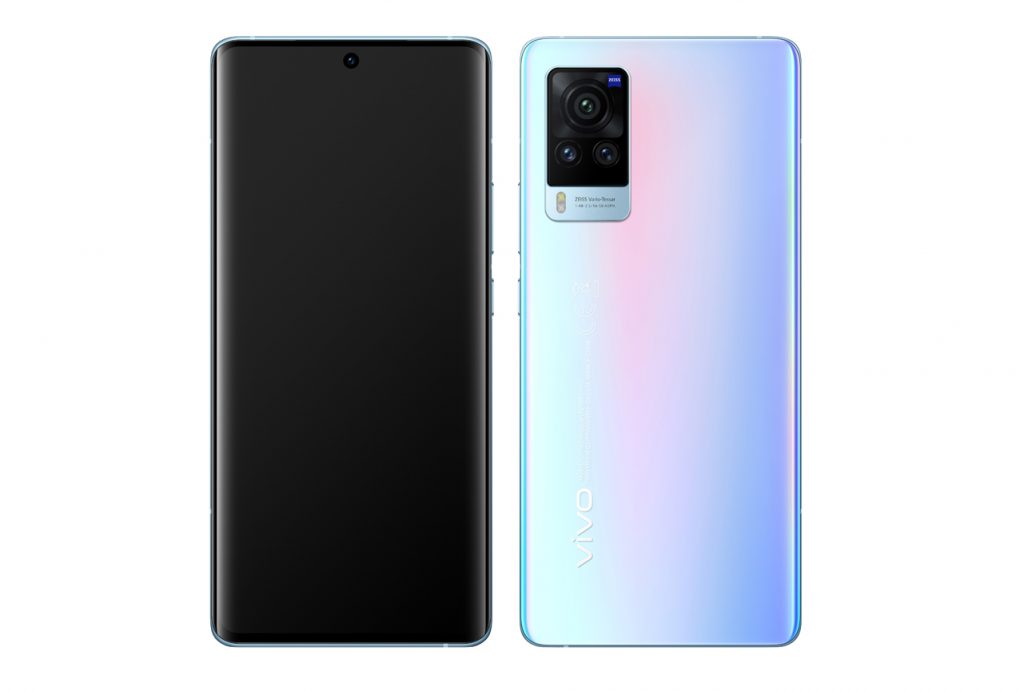



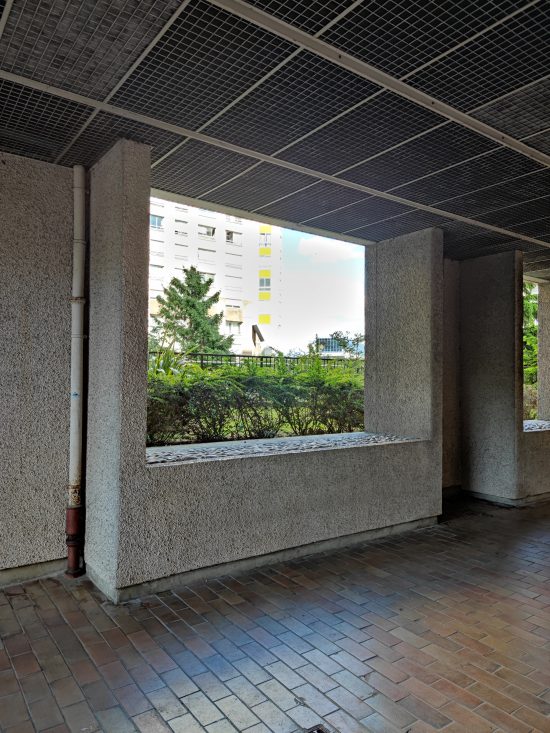



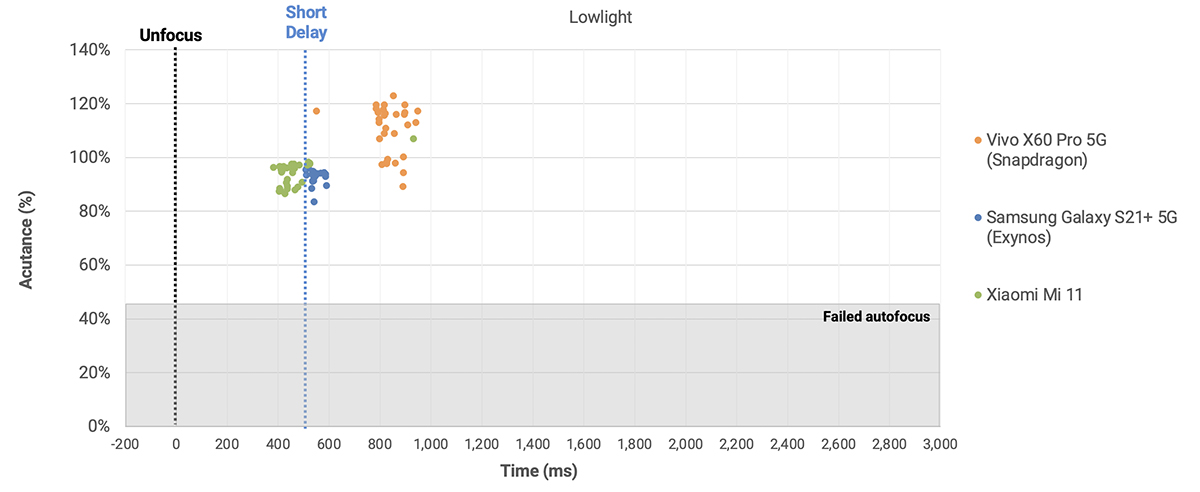









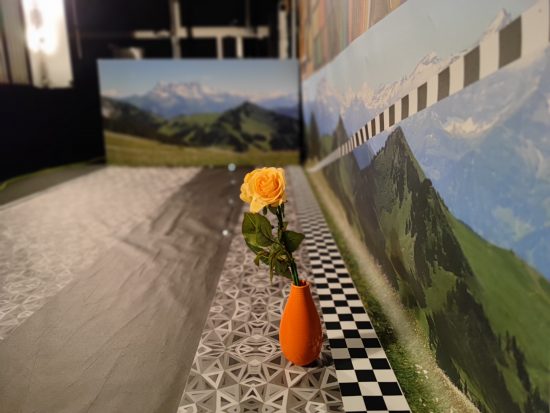


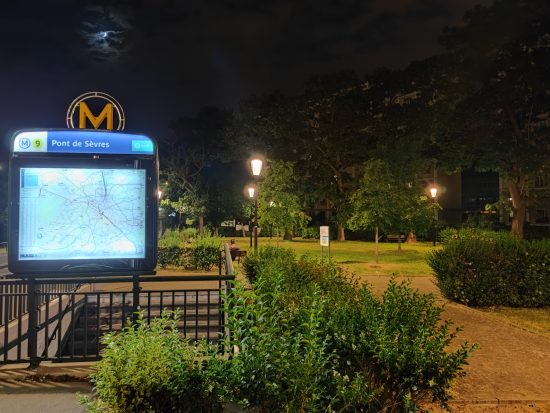

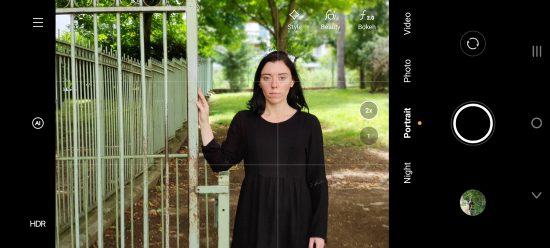







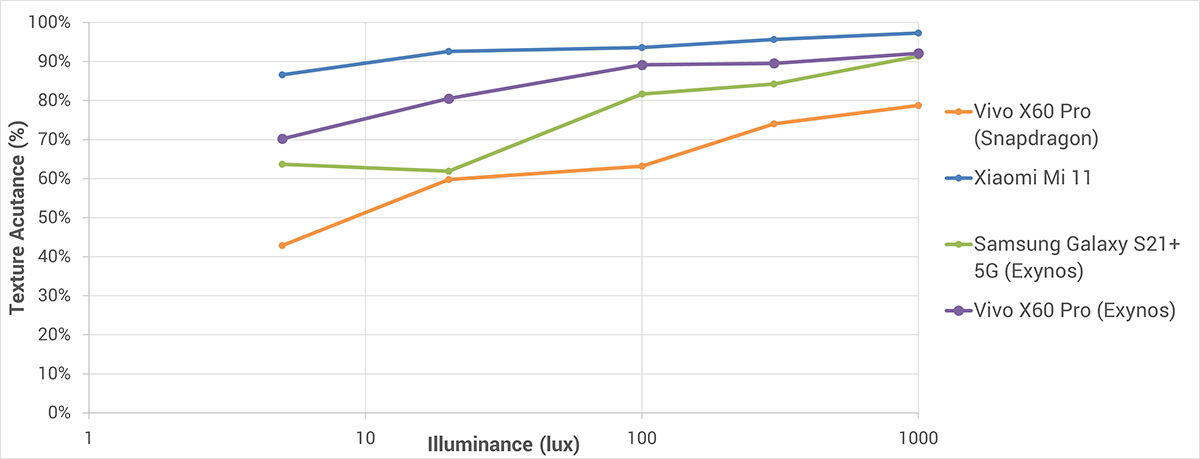

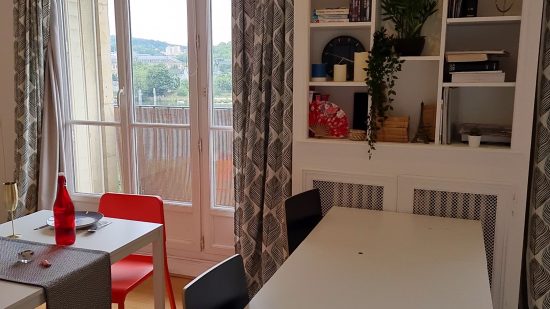
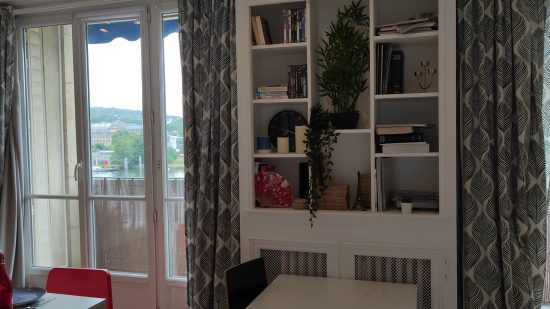

DXOMARK encourages its readers to share comments on the articles. To read or post comments, Disqus cookies are required. Change your Cookies Preferences and read more about our Comment Policy.